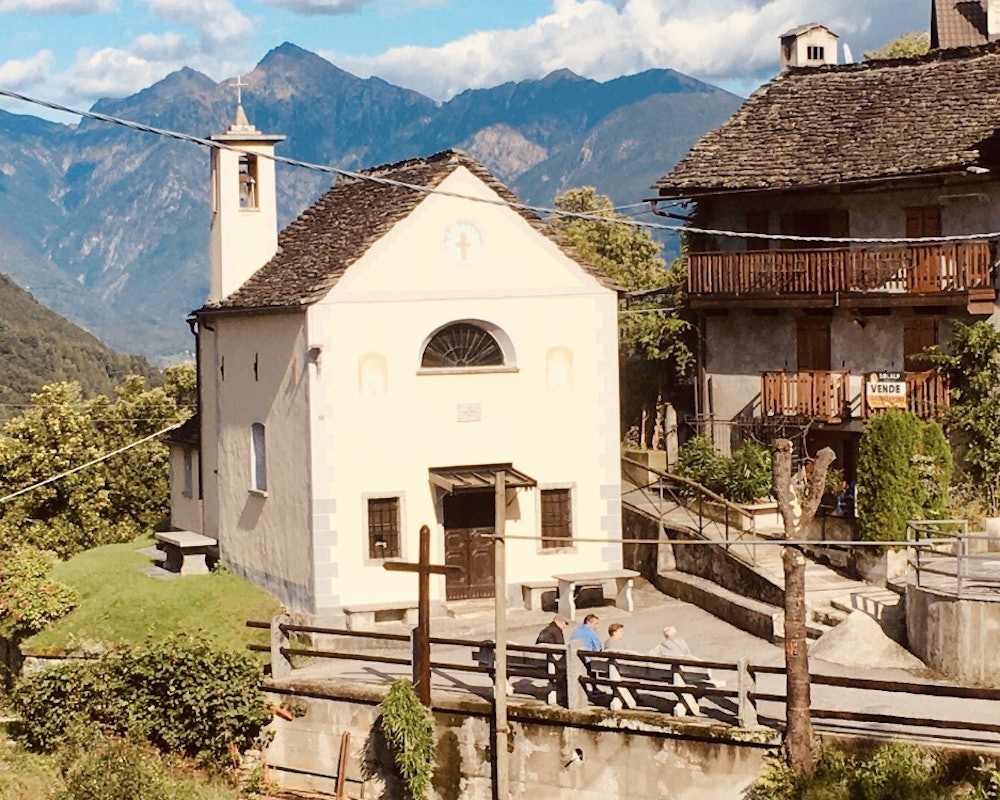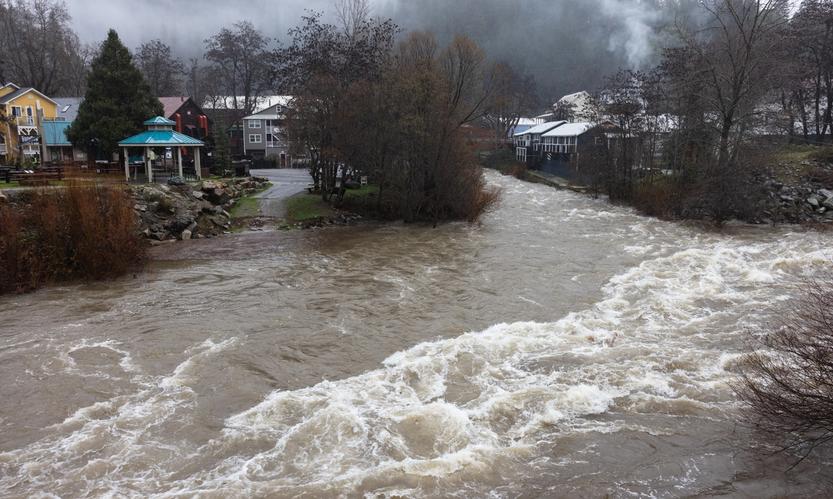Tracing the Footsteps of Our Ancestors — Part 14
January 24, 2024
On the second to last day of my visit to the Bognanco Valley, I met up for an interview with a local author and historian, sharing with him the story of my ancestors and the many other immigrants who came to Sierra County from the region (the interview ended up as a half-page article in the Eco Risveglio newspaper). We then got into his vehicle and did a tour of the rest of the valley, stopping near the border of Switzerland. Afterward, for lunch, I met an 83-year-old woman and her son, who had come from the city of Varese to meet me. This woman’s grandfather was Giovanni “John” Mottini, the brother of my great-great-grandfather Joseph Mottini. Our meeting was the first time the California and Italian branches of the Mottini family had met for over a century! For some background on John Mottini, he immigrated to Sierra County in the 1880s and became a naturalized U.S. citizen at Downieville in 1889. Before moving to Nevada City, he made his home at China Flat (now Camp Yuba). In 1902, he married Angelina Baietta (another immigrant from Bognanco). Shortly after the marriage, the couple returned to Italy. However, nobody on my side of the Mottini family ever knew what happened to John after he left California! So, I did some research. It turns out that after the birth of his son Mario at Bognanco in 1904, John returned to the U.S., living in both Seattle and Tacoma, Washington, two towns where many other Bognanco immigrants were living, including his distant relation John Peter Pianezzi (a.k.a. William Ramm/John Delano). John Mottini made several trips between Washington and Bognanco, according to immigration records. A daughter, Luigia, was born to John and his wife in Bognanco in 1907. John then went back to the U.S. for some time before returning to Italy for good. He was working in the town of Varzo in Italy when he unexpectedly passed away in 1918. The woman I met for lunch was born in Bognanco to Luigia Mottini and her husband. Unfortunately, the woman never got to know her mother well, as she was only six years old when her mother died. She was sent to a boarding school and had a distant relationship with her father. However, she did know that her maternal grandparents had once lived in America but didn’t know anything about them. Therefore, at 83 years of age and having outlived her siblings, she was quite surprised to receive my phone call after I tracked her down! She told me that she thought she would go to her grave before ever learning anything about her mother’s family and her relations in California! I showed her photos of the Mottini family property at Camp Yuba and of her mother’s first cousins and their descendants. After lunch, we met up with the woman’s paternal cousin (the two hadn’t seen each other for around half a century) and drove to the Bognanco Valley hamlet of Bei, which was the home of the Mottini family (a nearby locale bore the name “Alpe Mottini” for many years; unfortunately the old farmer’s cottage at this location was torn down not long before my visit). My great-great-grandparents’ first child, Domenica Maria Mottini, was born at Bei in 1880. Old-timers in Downieville and Sierra City will remember her by her anglicized married name of Marie Williams and for being the mother of Jewel Williams Rixey, Downieville’s postmistress. At Bei, we were greeted by my third cousin twice removed and her husband (they are two of only a handful of residents of the village), who treated us to some homemade grappa (the Mottini men in California were also known for their homemade grappa; my great-great-grandfather Joseph Mottini died from cirrhosis of the liver). After sampling a vast selection of beverages, we walked (or should I stay stumbled?) over to the village’s small church, built in 1662. It is likely the very church at which my great-great-grandparents, Joseph Mottini and Rosa Morganti, were married in 1880! I still have their original wedding clothes in storage in California. Though I would’ve wished to stay in Bei longer, the elderly woman and her son had to drive back home to Varese. If only we had more time! All in all, it was a heartwarming experience. We still talk on the phone at least once a week and plan to meet up again sometime soon. Coming next week in Part 15, the series finale, I will tell the stories of a few other immigrants from Bognanco who lived in the North Yuba region and provide my final thoughts about my visits to the ancestral homes of many of Sierra County’s Italian immigrants. The small church at Bei, built in 1662.
The small church at Bei, built in 1662.
Featured Articles

Storms Bring Heavy Rainfall and Local Disruptions →
December 22, 2025
Sierra County faces power outages and water issues amid heavy rainfall and storm warnings.
215 Animals Seized for Cruelty from Grass Valley Property →
December 22, 2025
Human Remains Found Near South Yuba Bridge in March Identified →
December 17, 2025
Transfer Station Burn Suspended After Community Concerns →
December 16, 2025
Sierra Hardware Plans Extensive Repairs After Flood Damage →
December 8, 2025